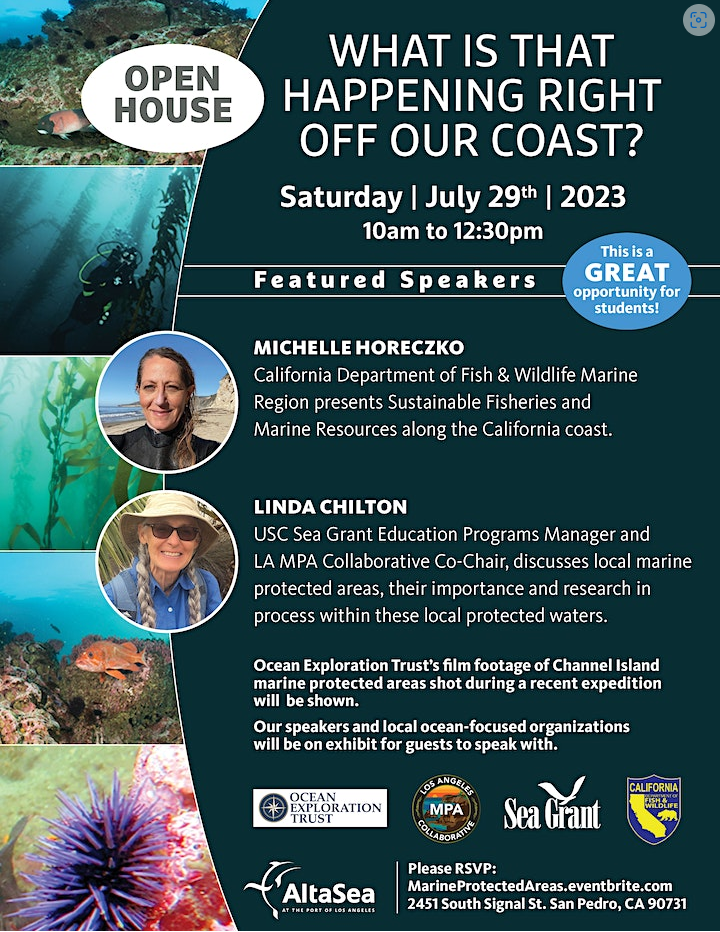ALTA SEA ORG EVENT JUNE 29th 2024 Starts 10 AM
Good video on this site too.

BUZZFEED : DEEP SEA ANIMALS LOOK LIKE ALIENS
Have you seen a BLOODY BELLY COMB JELLY? The PELICAN EEL? Or the BLOB SCULPIN?
PBS SCIENCE : MARINE MAMMALS IN U.S. WATERS : RISING TEMPERATURES : FOOD SCARCITY
Excerpt: Researchers with the National Oceanic and Atmospheric Administration examined more than 100 stocks of American marine mammal species and found more than 70 percent of those stocks are vulnerable to threats, such as loss of habitat and food, due to the consequences of warming waters. The impacts also include loss of dissolved oxygen and changes to ocean chemistry.
The scientists found large whales such as humpbacks and North Atlantic right whales were among the most vulnerable to climate change, and that other toothed whales and dolphins were also at high risk.
YAHOO NEWS: SCIENTISTS ASTONISHED PACIFIC RIGHT WHALE
Excerpts: The whales' survival prospects remain threatened by human activities. Noise pollution can disrupt their navigation, contaminants such as plastic may cause harm, and entanglements in fishing gear lead to potential injuries or even death.
The most recent data, detailed by NOAA Fisheries, suggest that only about 30 of these hales remain in the "eastern stock" in U.S. Waters. So, an unexpected sighting is extraordinary....
SCIENCE DAILY - RESEARCH NEWS OCEANOGRAPHY
Hidden Threat: Global Underground Infrastructure Vulnerable to Sea-Level Rise
DAILY MAIL : 50 NEW SPECIES OFF COAST OF CHILI some good videos of the newly discovered deep see creatures here! Article by William Hunter
Excerpt: Along this 1,800-mile (2,900km) ocean mountain range the researchers observed 160 species - almost a third of which were new to science.
Dr Javier Sellanes of the Universidad Católica del Norte, said: 'The astonishing habitats and animal communities that we have unveiled during these two expeditions constitute a dramatic example of how little we know about this remote area.'
WILDLIFE ORG - ELEPHANT SEAL DNA BOTTLENECK
Will all elephant seals look alike?
It could happen.
This is one of the many reasons that diminishing populations of animals and threats of extinction make bringing the species back difficult to impossible!